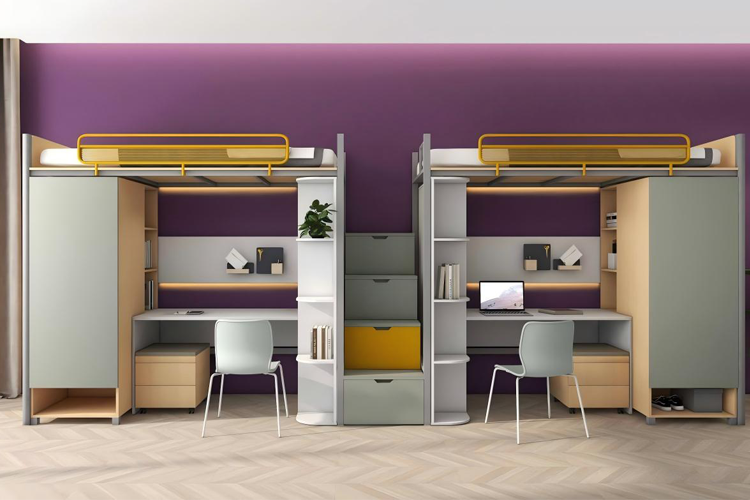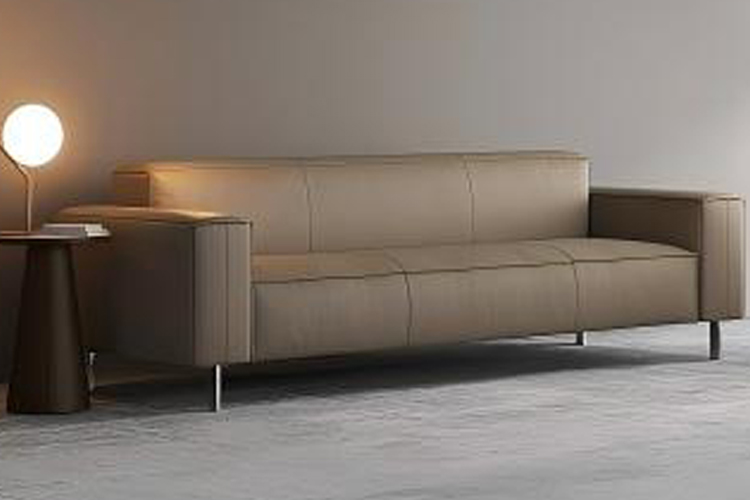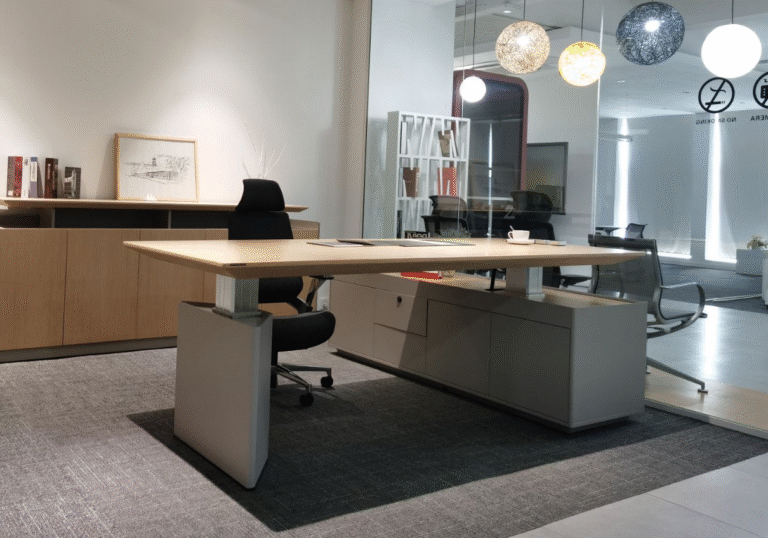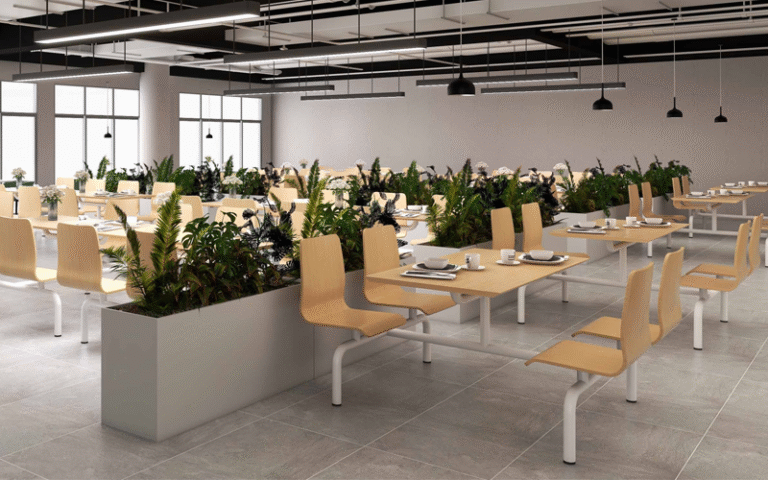The Ultimate Guide to Apartment Bunk Beds
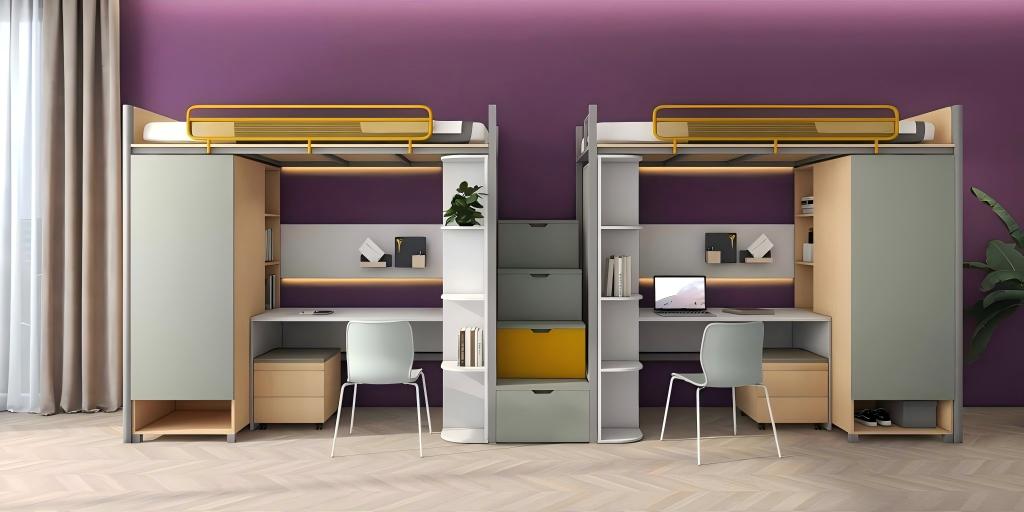
Due to small apartments, one is forced to use creative solutions for his/her space, starting with the bed. Traditional beds can take up too much valuable space in your home. This is where apartment bunk beds have become essential for urban living. They create functional living spaces in tight quarters by stacking beds on top of each other.
Bunk beds designed for rental issues are what you need. Specialised designs are required due to low ceilings, narrow doorways, and restrictions on rentals. When it comes to apartment living, forget the standard bunk beds. Instead, you need a more compact configuration. Your bunk must have robust safety features and be easy to disassemble at a moment’s notice. If I get this wrong, safety risks or wasted money.
This guide solves your small-space sleep dilemmas. We will show you how to choose bunk beds that will make the most of every inch while following strict safety regulations.
What bunk bed configurations work best in small apartments?
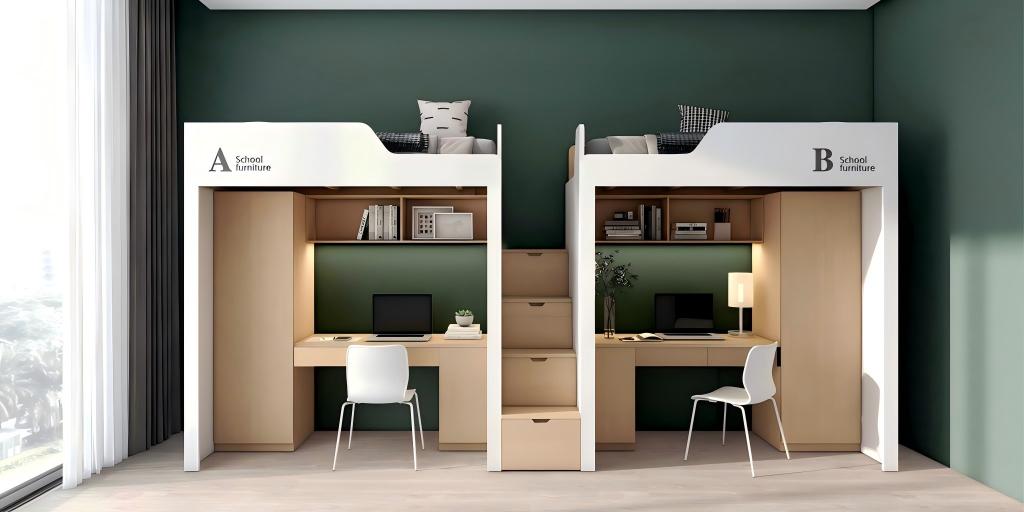
To begin with, you can make smart layout choices to optimize your limited square footage. When tight on space, these apartment bunk beds can convert a room into two spaces. Here are three great apartment-friendly bunk beds: L-shaped, loft-style, and twin-over-full. Bunk beds that save space utilize the vertical area and unique room sizes.
Corner-friendly L-shaped designs.
Also, L-shaped bunk bed combinations can put corners to good use. The arrangement has the lower bed in a perpendicular angle to the upper bed. Floor space is thus freed up for desks or play areas. With this design, your head won’t bump against the ceiling when your sleepers face out. Select models with durable bunk bed frames like reinforced pine to withstand uneven weight distribution. When you’re putting the bed together, always check the weight capacity.
Loft beds with integrated storage.
So, loft-style bunk beds for small apartments raise sleep space while putting storage below. In studios with under 500 sq ft, built-in drawers or shelves substitute bulky dressers. When choosing, consider 14-inch guardrails with bunk bed safety standards like non-slip ladders. Choose lofts under 70 inches tall with 6-inch mattresses to make low ceiling bedroom bunk beds. This keeps a clearance of inches from the ceilings, which is crucial for bunk bed assembly.
Twin-over-full space optimization.
Twin-over-full bunk beds are great for shared apartments. The narrow top bunk is suitable for children, while the lower bed is spacious enough for adults. Check Doorways Before Bunk Bed Assembly; Modular Units Easy Move Get a bunk bed with stairs or with a ladder? What is the best choice? In rentals, you must always anchor frames to walls for bunk bed safety standards, particularly in earthquake-prone areas.
How do bunk beds save space in apartments?
Let’s look at the vertical efficiency that makes apartment bunk beds special. Bunk beds are designed for sleeping higher, thus saving up such space for day-to-day activities. This approach is very important for bunk beds for small apartments, as every square foot counts.
Vertical vs. horizontal space utilization.
Bunk beds for apartments use wasted air space rather than floor space. Heavy bed frames take about 50-70 sq ft of vertical space. But bunk setup takes just 15-20 sq ft of space vertically. For low ceiling bunk beds, the top tier, which is at a height of 5-6 feet, preserves walking space below. When maximizing height, always prioritize the bunk bed safety standards like guardrails 14 inches high. Measure the dimensions of the room double time to have a safe 30-inch clearance through all four sides.
Multi-functional lower tiers.
The freed area below can now become adapt to living areas. You can find durable bunk beds with a built-in desk, dresser or seat nook under the top bunk. This would mean stations in studios without compromising on sleep. When comparing bunk beds with ladders and stairs, the latter with built-in drawers offer 15% more storage. Before you build a bunk bed, check the maximum weight capacity (recommended at 300+ lbs).
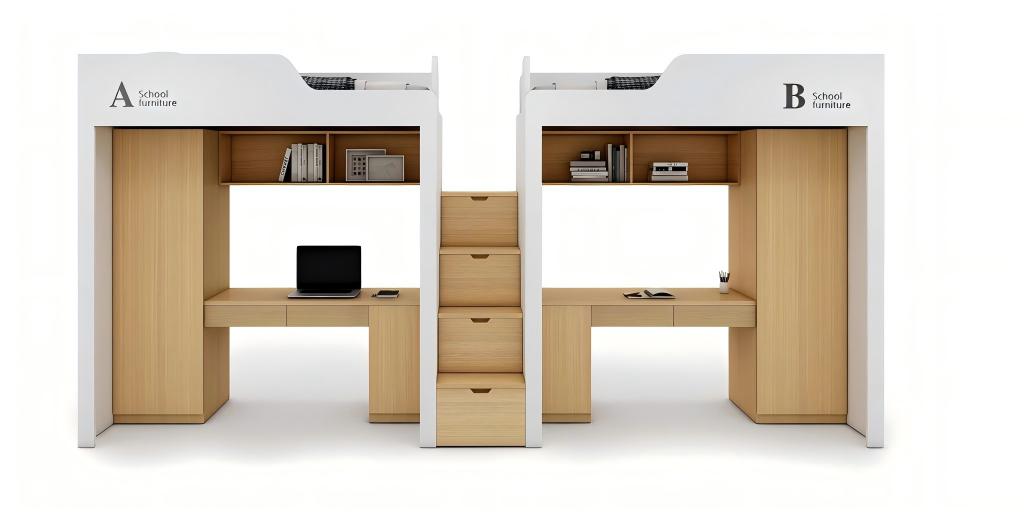
Measuring clearance zones.
Finally, strategic planning prevents cramped layouts. Identify three zones: 24-inch ladder access paths, 30-inch safety perimeters around the bunks and 36-inch ceiling buffers above the top mattresses. Corner bunk beds are great for small apartments and open up the central area. Use painter’s tape to mock up footprints before assembling the bunk bed. Keep in mind that mattresses that are 7 inches or less are required in low-ceiling bunk beds.
What safety features do apartment bunk beds require?
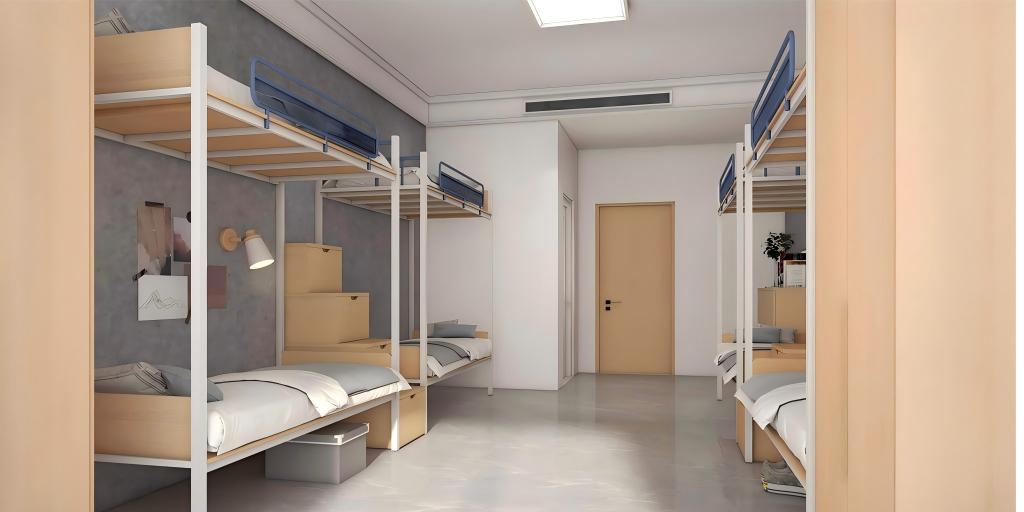
Let’s talk about safety for compact living spaces. Due to their height and limited space, apartment bunk beds require strict safety measures. Guardrails, let frames, and secured access points prevent accidents in tight spaces. These bunk bed safety standards are particularly crucial for bunk beds made for apartments, where less movement is available.
Guardrail height standards.
Guard rails must be 5 inches or more above the mattress surface on each bunk. For the top bunk, this stops people from rolling off while they are sleeping. Similarly, the lower bunk rail protects occupants from impacts due to tight walkways. Check the distance between the rails. It should be less than 3.5 inches. This bunk bed safety standard prevents your child from getting stuck.
Ensure that the bed rails do not lower the 30-inch head clearance in low beds. When setting up the bunk bed, always attach the rails directly to the frame, not detachable.
Weight distribution tests.
On the other hand, durable bunk beds will likely require ASTM F1427 certification, which proves the bunk bed frame can withstand over 400 lbs of dynamic weight (jumping). Testing load limits with sandbags at multiple points will ensure the capacity of your bunk bed. To save space and have a bunk bed with stairs containing storage, it is best to strengthen all the joints where the stairs meet the frame. These are the regular stress points. Do not accept units missing a stamped certification label near the base.
Child vs. adult safety protocols.
Thus, the bunk beds for small apartments need age-specific adaptations. Children under the age of 6 are to use only the lower bunk. Anyone using the top bunk has to be over the age of 9 years. To accommodate adult-size bunk beds for apartments, guard rails should be widened to over 12 inches using steel frame 500 lbs. supporting units. When it comes to ladders vs stairs bunk beds, stairs with railings reduce the risk of falls 60%.In earthquake-prone zones, always install wall anchors during bunk bed assembly.
How do you choose the best bunk bed for an apartment?

After ensuring safety, we then select specifically. An apartment bunk bed must fit the space and your needs accurately. If the dimensions fit the footprint of the room, the height of the ceiling, and the weight requirements, there won’t be any problems when you connect things. Space-saving bunk beds improve compact living rather than inhibit it.
Ceiling height compatibility.
Check the floor-to-ceiling distance first to get low ceiling bunk beds. For an 8-foot-tall apartment, choose a unit that is less than 72” tall and one that has a maximum of a 7” mattress so that you have at least 30” clearance above. You should not go with loft beds if your ceilings are under 7’6”. Instead, do staggered bunk bed styles like twin-over-futons. When assembling a bunk bed, be sure to leave a clearance of 36 inches from the ceiling fans or lights. Check the headroom by raising your arm and see if your fingers touch the ceiling when seated. If they do, you know the bed is too tall.
Consider the age and weight of the user.
Next, match the tier assignment to the intended occupant. A child under the age of 12 should use a lower bunk with a bunk bed weight capacity of 200 lbs. An adult will require upper tiers with a bunk bed weight capacity of 300-500 lbs. For bunk beds for small apartments catering to guests, look for convertible designs with reinforced joints. Remember: apartment-ready bunk beds for mixed-age households require guardrails 12-inches+ high for adults to contrast 5-inches+ for kids. Finally, check the ASTM labels to ensure they offer dynamic load testing when assembling bunk beds.
Durability of the material (hardwood and metal)
Finally, consider factors going into longevity. For instance, kiln-dried hardwood (oak or maple) is humidity-resistant in urban units but costs 20 percent more. Powder-coated steel offers lighter bunk bed assembly and a higher bunk bed weight capacity (500 lbs+), ideal for renters who move
Are ladders or stairs better for apartment bunk beds?
Now, let’s resolve this critical space-access dilemma. Ladders and stairs for your bunkie have trade-offs in small apartments.A ladder bunk bed saves space in your apartment, while a stair bunk bed offers easy access and storage space. The best choice for bunk beds that won’t take up a lot of space in your apartment will depend on the configuration of your place and the requirements of users.
Angled ladder space savings.
First, angled ladders are ideal for very tight spaces. They require just 18 by 30 inches of floor clearance. Bunk Beds Accessories attach diagonally to frames and tuck in neatly against the wall. For low ceiling bunk beds, the ladder’s slope should not exceed 70 degrees for safe usage. When building a bunk bed, anti-slip treads should be fitted to the rungs of the ladder, and a weight test should be done. A quality ladder can support a 300-pound weight or more. (bunk bed weight limit) Suitable for studios below 400 sq ft, they leave extra space for nightstands or pet beds.
Staircase storage solutions.
In the meantime, stairs that allow access can also be converted into functional storage by adding drawers or shelves to them. A 24×48-inch section of the floor is needed for placement. Moreover, there is more than 15 cubic inches of storage space within. Thus, they function as a dresser when you have bunk beds. They work beautifully in a tiny apartment. Choose durable bunk bed stairs with reinforced joints where steps attach to the frame. Pick beds with handrails and a step depth of 4 inches for child safety for bunk beds. Just right for shared kids’ rooms that need organization for toys and clothes.
Safety comparisons.
Consequently, safety varies sharply between options. Stairs are 60% less likely to produce falls than ladders, especially for seniors or kids. Nonetheless, ladders permit tighter wall clearance in the narrow hallway common to apartment-friendly bunk beds. When putting together a bunk bed, the stairs should be affixed with 4 plus wall brackets. If not, a pair of ladders with wide, grooved rungs should be used. Make sure you check for ASTM F1427 certification labels on stairs and ladders. Stairs must hold 400 lbs. with dynamic loading, and ladders must hold 250 lbs. In earthquake zones, stairs add structural stability.
What weight limits should I consider for adult bunk beds?
The structure also has to be strong. It is essential for apartment bunk beds for adults to have strict weight specifications. Choose units that can support 250-500 lbs of weight per tier. Look for these cabinets specifically made of reinforced steel or kiln-dried hardwood. If you do not pay attention to the weight limit, the frame will fail and malfunction. Moreover, this usually happens in compact living spaces where people rearrange their furniture frequently.
ASTM weight certifications.
To start, look for frames bearing ASTM F1427 certification, meaning they pass simulated 400-lb dynamic load tests (meaning they can take jumps or rolls). Recognized manufacturers label joints at the bottom for certification. This bunk bed safety standard ensures product durability for bunk beds suited to apartment use. Keep the documents for your bunk bed assembly in case of rental agreements or warranty claims.
Frame material strength tests.
Next, evaluate material-specific thresholds. The powder-coated steel handles hold over 500 lbs and have gussets add additional reinforcement to joints. This makes the perfect bunk bed for rental units with high turnover. The hardwood (oak/maple) can support up to 400 lbs, but it needs humidity control to prevent warping. When selecting a space-saving bunk bed behind closed doors, make sure to test the sample joints: press down on them. Quality frames will show no flex when 300 lbs is pressed down on them. Confirm the bunk bed weight capacity includes the mattress weight of around 50-80 lbs.
Dynamic vs. static load limits.
Finally, understand critical distinctions. Static limits, e.g., 500 lbs, are for stationary weight like sleeping. Dynamic limits, e.g. 250 lbs, apply to movement, like sitting up. Lively ratings that minimize joint fatigue during everyday use matter most for bunk beds for tiny apartments. Make sure to tighten the bolts of your bunk bed once every month. This will help maintain the rated bunk bed weight capacity. Moreover, this is very true for metal frames in humid areas.
How do I measure my apartment for a bunk bed?
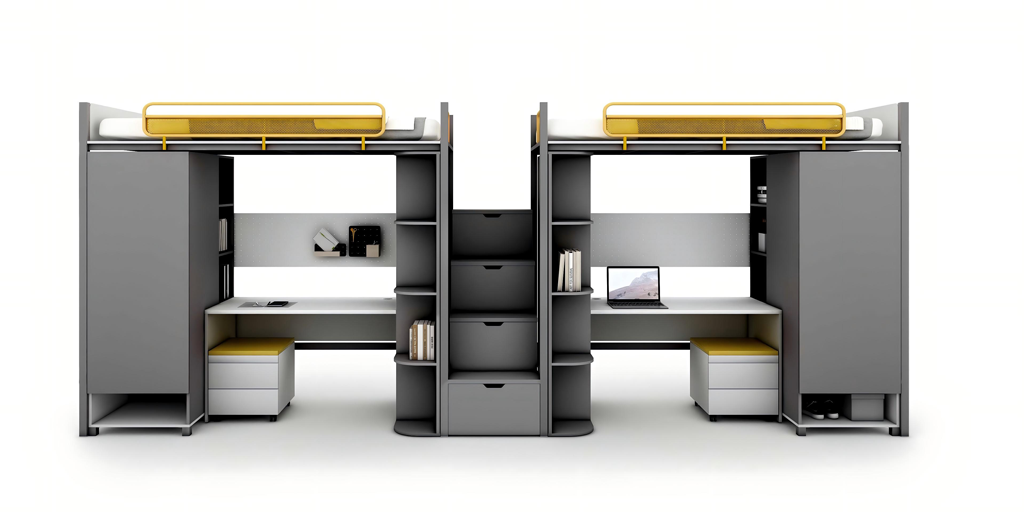
Once you choose your appropriate design, the measurements need to be precise. To avoid the unsuccessful installation of apartment bunk beds, exact room assessments should be done.
Before you start an assembly of a bunk bed in your apartment, gather all the necessary measurements listed in this quick guide.
Measure clearance over the top bunk
You will want to measure the ceiling height and doorways so that there will be at least one to three feet of clearance above the top bunk. This will prevent you from making a costly return and ensure that your choice passes bunk bed safety standards. You will want to go with a model that has been explicitly designed to fit low-ceiling bunk bed spaces.
1980s bed dimensions
Having a ceiling height of under 8 feet (96 inches) means you will need to deduct the bed mattress thickness (6-8”) and guardrail height (5-12”) from your total measurement. For instance, a 96-inch ceiling can fit a total installation of 72-inch frame + 8-inch mattress + 12-inch safety guardrail = 92” leaving 4” clearance. Avoid a loft style gallery model once the residual clearance is low, below 30”. During the assembly of a bunk bed take out a laser measure to verify diagonals where the ceilings slope.
Doors and windows
Next, you will want to map out obstructions that are around the installation area. Measure all doorways and hallways leading
Which materials last longest in apartment bunk beds?
Right measuring and material selection ensure durability. Apartment bunk beds have special stresses — moving a lot, humidity and small places. Hardwoods dried in a kiln or steel with power-coat finish resist warping and corrosion, which allows for a more long-lasting option than others. This robust bunk bed can last decades in the city.
Humidity-resistant finishes.
First, combat moisture damage inherent to urban apartments. Humidity resistant finishes create a barrier against moisture on the wood and metal frames of your door. These bunk beds are suitable for apartments and help to prevent swelling in summer (with humidity above 60%) and cracking in dry winters. Check the finish uniformity when the bunk bed is assembled. Gaps will let water seep in and may warp the wood. Coat your bunk beds yearly with sealants at places like the bathroom or kitchen so that the weight capacity remains intact.
Scratch prevention coatings.
After that, prevent nicks when moving and rearranging. Heat-cured coatings such as polyester powder on steel are resistant to more than 100 scrubs without marring. Wooden space-saving bunk beds will have UV-cured acrylic finishes that absorb impacts better than oil-based stains. Opt for curved corners for bunk beds, especially in small apartments where tight spaces may cause bumps. Lightly scrape a coin on the coating to test it; a good coating won’t leave any marks. Keep these things so that bunk bed safety standards remain.
Lightweight yet sturdy options.
Finally, balance portability and strength for renters. Using aircraft-grade aluminium instead of steel has resulted in a 40% drop in weight while supporting bunk beds rated to handle loads of 400 lbs. Bamboo composites provide the strength of hardwood at half the weight of hardwood for low ceiling bunk beds. Check the joint reinforcements on all light but sturdy models during bunkbed assembly. If you can, avoid getting anything hollow tubing. Look for metal or cross braced hardwood as thick as 14-gauge or more. These options simplify moves without sacrificing durable bunk beds functionality.
Can bunk beds fit apartments with 8-foot ceilings?

With wise design choices, height restrictions can certainly be fixed. If you choose low-profile designs, bunk beds do fit in 8-foot ceilings. Comfort and compliance can be achieved with tighter frames, slimmer mattresses and adjusted safety features. Low Profile Bunk Beds Are Ideal for Urban Spaces with 96 Inches Ceiling.
Minimum height calculations.
To begin with the 96-inch ceiling, deduct the important bits, and you’re left with your usable height For guardrails on the top bunk, deduct 5-12 inches, and for mattress thickness, deduct 6-8 inches. The frame itself requires 72-76 inches maximum for safe bunk bed configurations. When you set up bunk beds, make sure their combined height isn’t greater than 90 inches to give you a 6-inch breathing space. For angled ceilings, measure the lowest point twice. Always check the bunk bed safety standard, which requires 30 inches clearance above the top mattress.
Mattress thickness trade-offs.
Next, balance comfort and space savings. For extra pressure relief, additional toppers may be needed as slim 6-inch mattresses maintain important head space. Bunk beds use foam that compresses better than springs when sitting on it, which is ideal for apartments. The best bunk beds for small apartments need to have hybrid mattresses. They can be 5 to 7 inches thick and are a great option if you want to get a durable mattress without compromising support. To check the thickness, sit up on the mattress. If your head is touching the ceiling, then get a 6-inch model. And always remember to factor the mattress weight into the bunk bed weight capacity when doing the bunk bed assembly.
Modifying Guardrails for Safety
Finally, modify the guardrails for low clearance. They must have removable top rails which will remain under 10 inches tall but will extend over 5 inches above the mattress. Also, for the space-saving bunk beds, get the flip-down guardrail design which folds in during the day time. To maximize sitting space, position the lower bunk rails less than a 4 inches above the mattress (the standard is 5 inches). For a strong design in high quality durable bunk beds, anchor the rails with through-bolts instead of screws during bunk bed assembly. Last but not least, always maintain under-3.5 inch guardrail gaps to comply with the bunk bed safety standards in case of lack of space.
How do I assemble bunk beds for easy moving?
Finally, let’s tackle relocation-friendly setup strategies. Apartment bunk beds tailored for easy moves prioritize modular design and simple disassembly. By choosing tool-free systems and organized layouts for your space-saving bunk beds, you can ensure they don’t get damaged while moving in and out of rentals.
Bolt vs. cam-lock systems.
Bolts offer the greatest connection stability, however, they require you to use a wrench to undo, which slows down disassembly. Bunk beds that assemble without tools using a cam-lock and a quarter turn to release. Ideally suited for apartment living where bunk beds are often in short term leases. For long-lasting bunk beds, select steel cam-locks for over 50 cycles without stripping and nylon cam-locks for lightweight frames. To prevent loss of hardware during moves, bag and label all the hardware by zone (e.g., Left Rail Bolts). Every time you reassemble a bunk bed, make sure you check the weight capacity.
Reassembly efficiency tips.
Next, streamline reconstruction in new spaces. Take photos while dismantling your bed, especially at junctions like ladders or stairs and bunk bed attachments. For small apartments with bunk beds, reassemble the frames in the area where they will be placed to avoid having to reposition heavy modules. Sticking the parts with diagram colors saves over 30 minutes on the move. Use a cross on the bolts so that the bed frame doesn’t warp. When undertaking this process, query Bunk Bed Safety Standards for their torque.
Pre-move preparation checklist.
Consequently, strategic prep prevents headaches. Two weeks before the move: Take measurements of the younger doorways/stairwells to approve clearance for the space-saving bunk beds modules. Remove upper bunks before anything else, wrapping rails in moving blankets and strapping them down. Remove the guardrails separately to avoid bending for low ceiling bunk beds. The slats must be shipped upright in a tube and the hardware in a labeled magnetic tray. Before proceeding to the last step, weight each bundle so that it does not exceed the mover’s limits. Most durable bunk bed modules weigh 40 lbs or less for single-person carry.
Why choose Onmuse Furniture for apartment bunk beds?
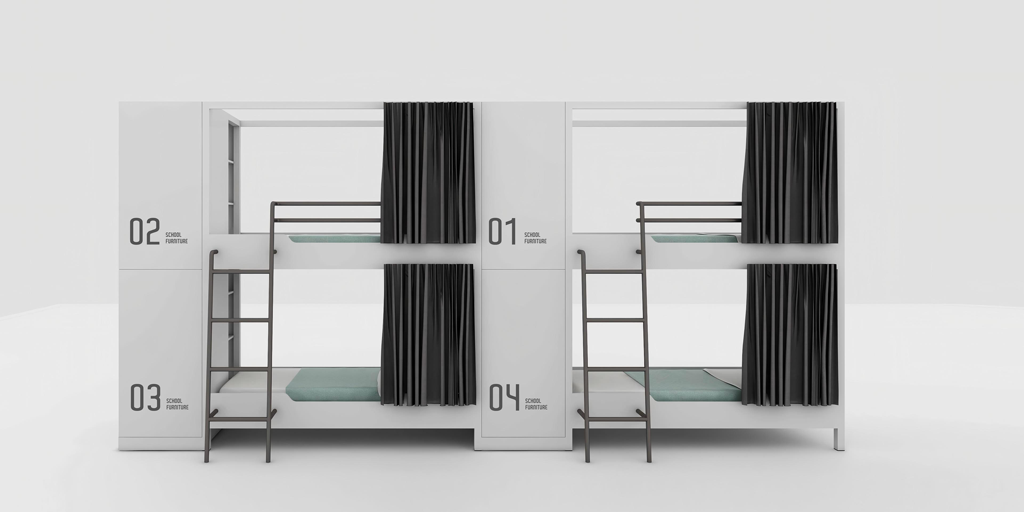
Let’s look at why specialized solutions for urban living matter. The apartment bunk beds being designed by Muse Furniture is focused on rental-related problems and combining space efficiency with easy assembly. Frames have custom sizing for non-standard apartments and tool-free disassembly.
Safety testing by ASTM means every joint can handle 400 lbs of dynamic weight and more. The 12″ height-adjustable legs help overcome the uneven flooring of older buildings. This is a critical feature of the care bed that generic bunks do not come with. If you move around a lot, free illustrated assembly guides will make it easy for you to reconstruct the bunks. Additionally, modular components will fit through 28″ doors.
Investigate our specially designed space-saving bunk beds that are L-shaped and ideal for apartments under 700 sq. ft. They are made of powder-coated steel that is humidity-resistant. On Muse bunk beds do not look like a regular bunk bed which are quite high-take a look at their bunk beds which measure to as low as 68”. The quality is one more advantage as the bunk beds which are lesser will compromise on quality but in this case you still get 8 feet ceilings height minimal style bunk beds with the same quality and durability.
Check out On Muse Furniture’s collections for solutions to urban issues. The apartment-ready designs that adjust in height and have easy-to-access space-saving options and modularity to ease relocation help you transform compact places without giving up on comfort and safety. Purpose-built furniture makes living in small spaces better.
FAQ Section.
1. Are bunk beds safe for adults in apartments?
Yes, if you pick frames that 250-500 lbs per tier and certified by ASTM F1427.
Reinforced steel joints, coupled with the through-bolt assembly, prevent wobbling. Avoid particleboard or plastic connectors.
2. What’s the minimum room size for bunk beds?
A 7’x10’ room can fit standard twin bunks, with walkways of 30” in between. For smaller studios, consider L-shaped configurations that require only 36 sq ft. Always check widths of doors for installations.
3. Can I disassemble the bunk beds, as I will be moving every year?
Yes—mods with cam-lock systems disassemble in under 30 mins. Label them in color codes to make rebuilding easier, and keep hardware in magnetic trays.

